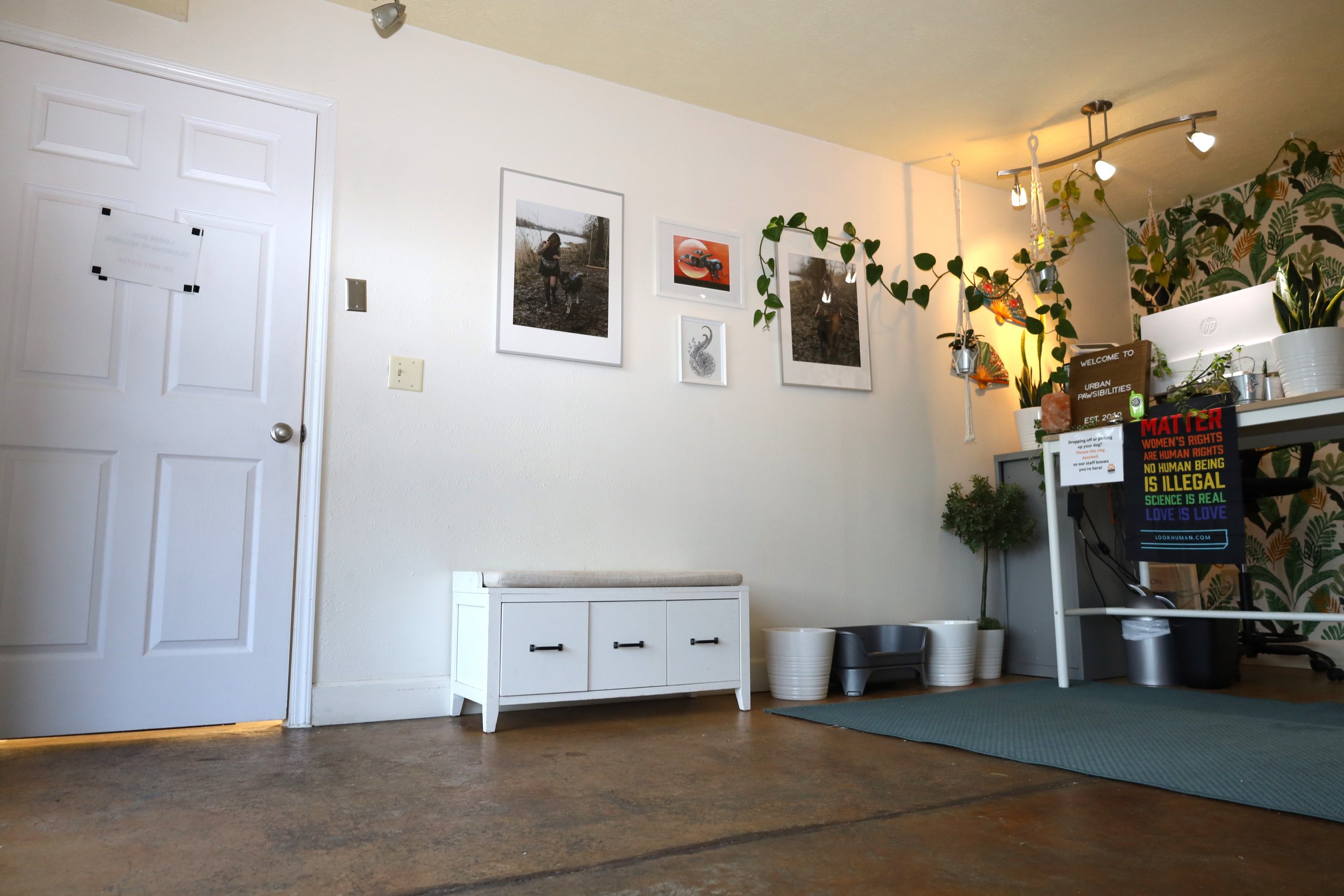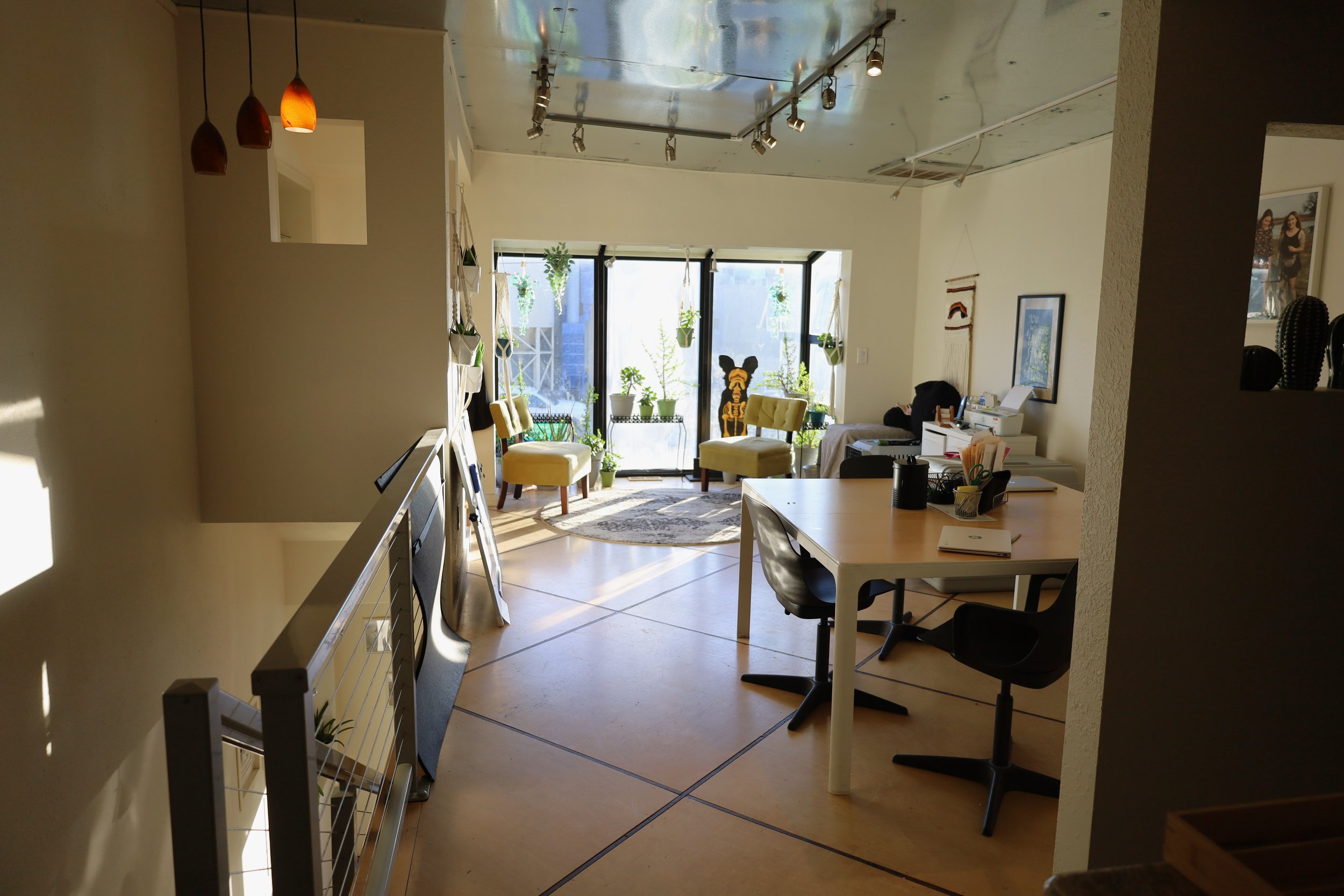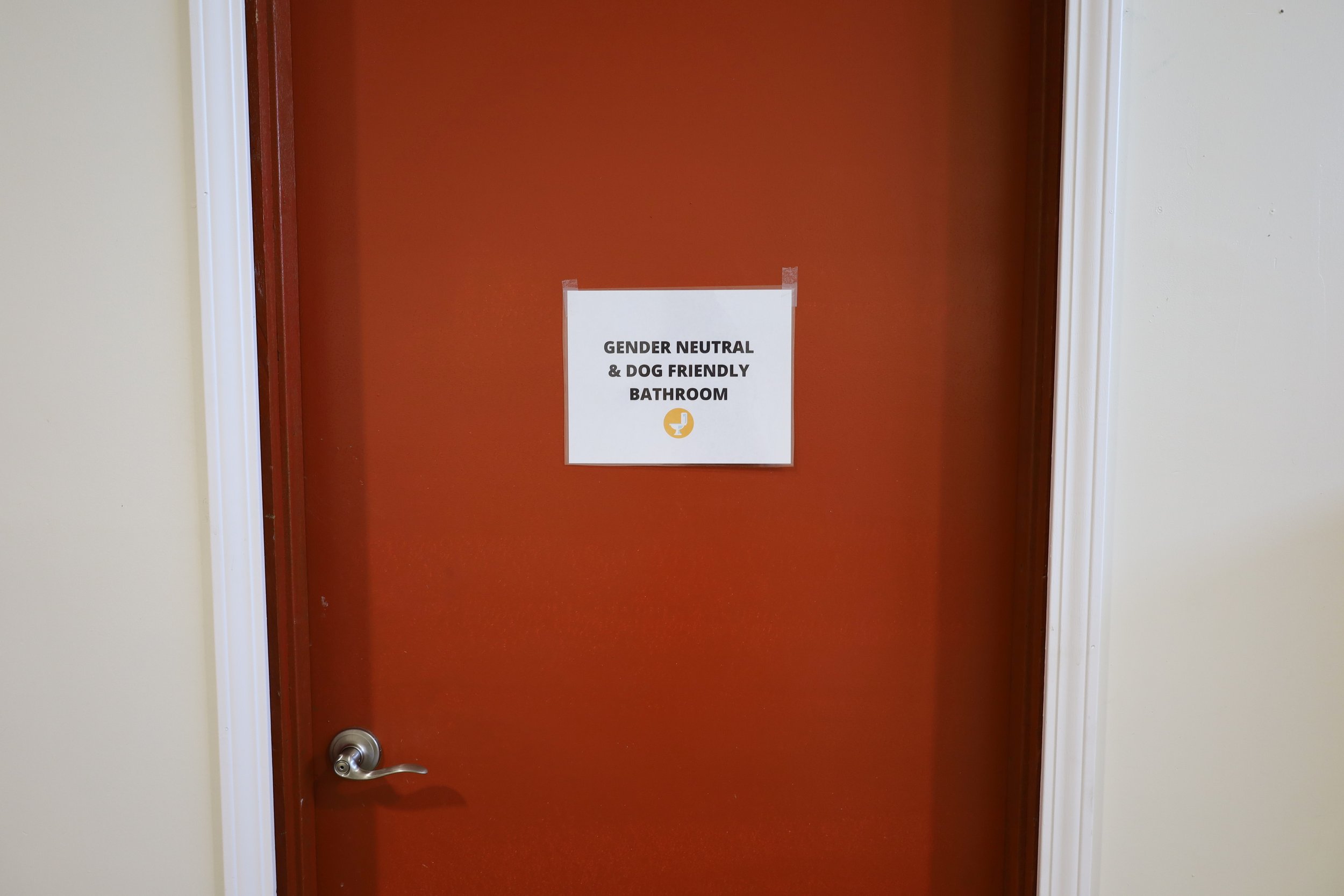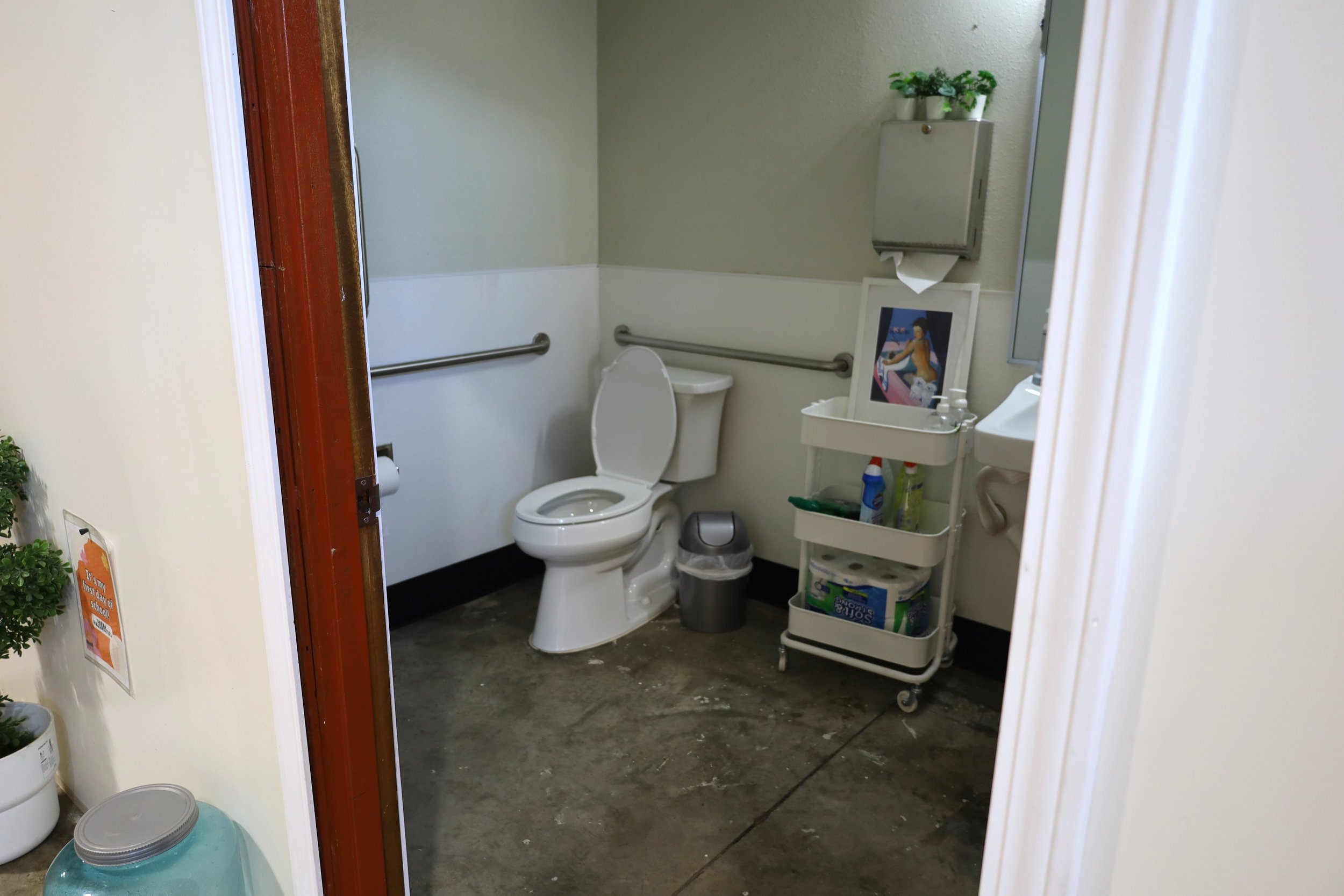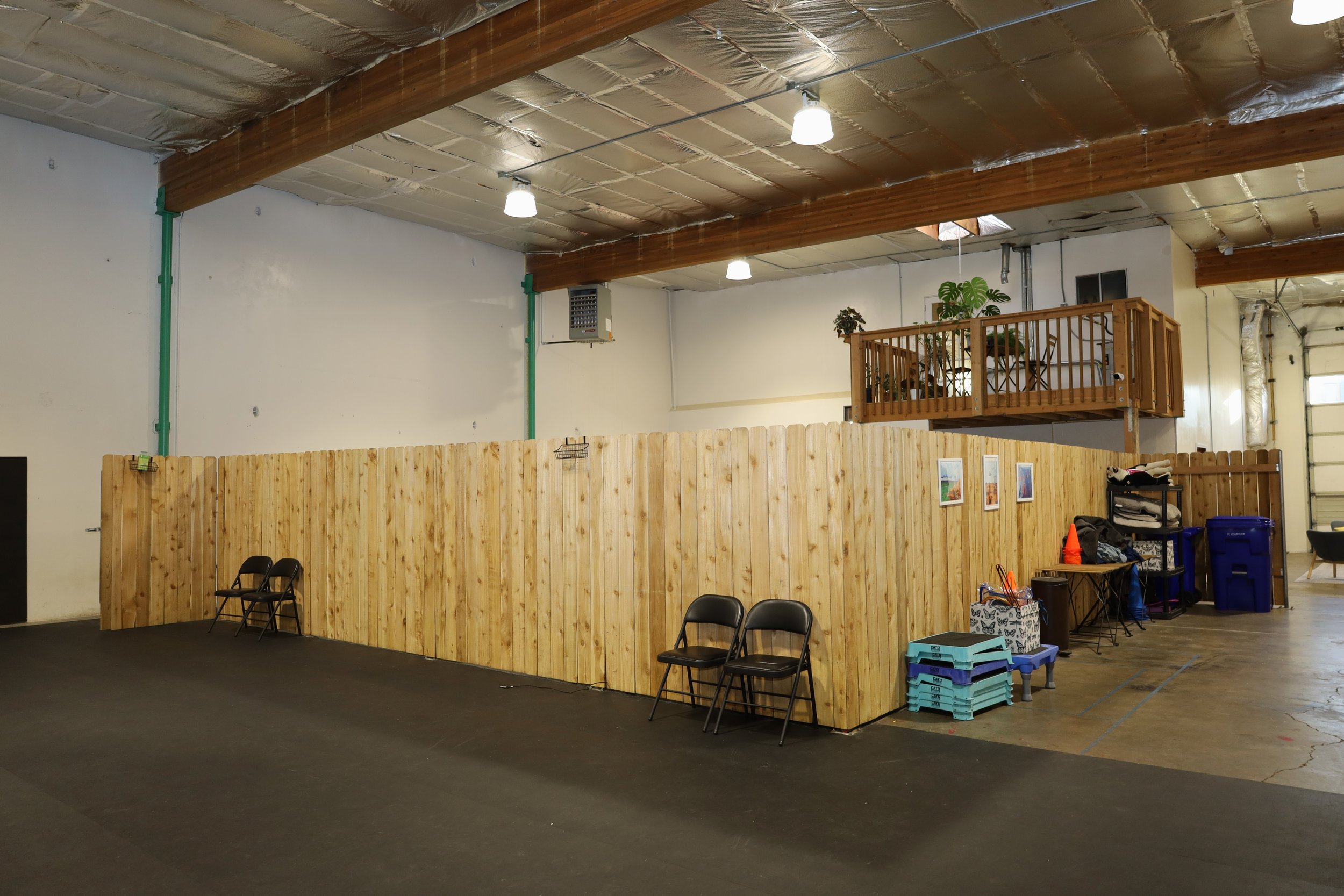About Urban Pawsibilities
We’re a dog training facility based in Portland, Oregon. We aim to foster a collaborative relationship with our clients. We understand the weight of the work we do, getting personal in people’s lives through their pets. Through this work, our goal is to ensure that needs are met, expectations are clear, and behavior is reliable.
Our Founder & Head Trainer
-
Emma is a born and raised Portlandian with a love of learning and a passion for animals. She established Urban Pawsibilities in 2020 with the goal of helping people create a dialogue with their dogs where needs are met, expectations are clear, and behavior is reliable. Emma specializes in socialization, foundation skill development, public access training, and reactivity rehabilitation.
Emma has a German Shepherd, named Modoc, who is training for herding and competition obedience, and a Dutch Shepherd, named Vector, who is training for IGP. -
Emma has taken, and continues to take, many professional development courses to improve her skills as a dog trainer and a teacher. She has completed accredited courses with Ken Ramirez, President of the Karen Pryor Academy and world-renowned animal trainer, as well as acclaimed behavior science expert, Susan Friedman. She is currently working to become a Certified Control Unleashed Instructor under the mentorship of Leslie McDevitt.
Emma is Pet First Aid & CPR certified through Pet Tech.
EMMA BRENT (She/Her)
Our Trainers
FERN PAGANI (They/Them)
-
CPDT- KA
Fern has been working with dogs professionally for 3 years. They have worked at three different dog daycares in Portland, where they've learned about dog behavior and appropriate play styles. Through taking classes with their own dogs (including classes at Urban Pawsibilities), they've grown to love dog training. At home, they have 3 dogs: an 11 year old Rat Terrier named Pickles, a 2 year old Decker Rat Terrier named Hercules and a 5 year old Corgi Chihuahua mix named Dwight. Their favorite dog breeds are Terrier, American Staffordshire Terriers, and Border Collies. In addition to trick training (Pickles knows over 20 tricks), Fern loves working with reactive dogs and teaching people that reactive dogs are good dogs, too. Fern is currently attending the Atlas Assistance Dogs Service Dog Trainer program, and is estimated to graduate by the end of 2025.
Fern is Pet First Aid & CPR certified through Pet Tech.
SKIP READ (They/Them)
-
CPDT-KA
Skip is passionate about helping "handle with care" dogs navigate their worlds, facilitating communication and relationship building between critters and their people, and providing non-judgemental support for both ends of the leash. Their goal is to become an accredited behavior consultant and offer services on a sliding scale.They have a perfect senior orange cat named Maverick, who is a good sport about putting up with trick training and knows nine cues. They have been working with dogs in facility settings for seven years, and have been training four of those.
Skip is Pet First Aid & CPR certified through Pet Tech.
Our Support Team
MILA NUNN (She/Her)
-
Mila is our new Administrative Assistant at Urban Pawsibilities! She'll be the friendly face greeting you during pick-up and drop-off and the voice behind our emails, texts, and phone calls. Mila will be handling scheduling, client communication, and all the behind-the-scenes tasks that help keep things running smoothly. We're so excited to have her on the team!
Mila knew by the time she was 8 years old that she was going to work with animals when she grew up. She kept that promise to herself. She was an Animal Control Officer for five years, has worked with several rescues, with fosters and adoptions, and volunteered at her local shelter. Mila’s passion and love for working with animals is one of her greatest strengths. Mila can usually be found wrapped up in a blanket reading a book with her Doberman, Armani, and her cat, Nyx, curled up in her lap.
Mila is Pet First Aid & CPR certified through Pet Tech.
ARADIA BURKHALTER (She/her)
-
CPDT-KA
Aradia has been training dogs professionally since 2021. She adopted her first dog, a pitbull mix named Denver, in 2018 and discovered a passion for reactive, excitable, energetic, and socially-particular dogs. In 2022 she brought home Shrike, a standard poodle, and competed with him in UKC conformation for 2 years, until he achieved his Grand Championship. Both of her dogs have taught her the essential skills of patience, adjusting training plans and expectations to meet the dog where they’re at, and finding ways to fulfill their natural instincts and drives. Her motto is “Let dogs be dogs, and help them be responsible members of society.” When she’s not training she’s out with Shrike and Denver in nature, dabbling with them in barnhunt and rally, and pursuing a degree in creative writing.
Aradia is Pet First Aid & CPR certified through Pet Tech.
Interested in getting a job in dog training?
At Urban Pawsibilities, we offer a supportive, collaborative environment where trainers can expand their expertise, explore different training specialties, and work with a diverse range of dogs and clients. Whether you’re passionate about basic manners or behavior modification, you’ll have the opportunity to learn, share, and make a meaningful impact every day.
If you’re ready to take the next step in your training career, we’d love to hear from you—reach out to us using the link below to start the conversation.


Not Sure Which Service is Right for Your Dog?
Take the quiz below to discover what service is best suited for your dog or puppy.
Common FAQs
-
We use positive reinforcement centered training plans to modify behavior. But what does that mean, and how does that differ from other training methods? There are a lot of misunderstandings and misconceptions about dog training, dog behavior, and animal behavior in general. To make a long story short, humans have been trying to use punishment as a technique for changing animal behavior for a very long time. What scientists have found, through thousands of studies of hundreds of different species, is that if you are trying to teach any organism, any new behavior, punishment - decreasing the likelihood of a behavior - is not as effective of a teacher as reinforcement - increasing the likelihood of a behavior. Animals learn faster, with more retention, and with better accuracy when we use positive reinforcement centered training plans to modify behavior.
-
We want to be good teachers, but we can’t refrain from ever punishing our dogs?
Sometimes we have to employ management strategies to prevent our dogs from being able to practice problem behaviors.
Those management strategies often rely on removing access to reinforcement, and when reinforcement is taken away or out of reach, that can surely act to punish behavior.
But using management strategies and taking away access to reinforcement is psychologically different for our dogs than adding something aversive, like a buzz on an e-collar or a correction on a prong collar, in an effort to get them to stop performing a behavior.
Even with the option of taking away reinforcement to punish behaviors we don’t like, the premise of our training methods is always to teach and reinforce behaviors we want to see and set our dogs up for success, so that we don’t have to rely on management strategies, and certainly so that we never have to use aversive tools to punish behaviors we find dislikable.
As Dr. Friedman puts it in her Living and Learning with Animals course, “Procedures that rely on the presence of aversive stimuli and resulting escape-avoidance behaviors have been well researched and shown to have serious disadvantages (Azrinand Holtz, 1966).”
Behavior modification that uses escape-avoidance training methods have been linked to increases in aggression, over-generalized aversion to other stimuli in the environment, escape-avoidance behavior, and increased apathetic behavior, also known as shut down behavior.
Training doesn’t have to be scary for your dog!
Quite the opposite, it should be really rewarding.
To read more about positive reinforcement and its uses in animal training, visit www.clickertraining.com.
-
To sign up for any of our services, you will need to create an account in our client portal system, Gingr.
To create an account, navigate to the top of this page, and hover over the "Client Login" button. A drop down menu will appear.
Click “For New Members”.
This page has a direct link to our client portal. It is an orange button that says “CREATE AN ACCOUNT HERE»”.
There is an instructional video and information about an optional app you can download.
Once you’ve completed your profile, you can send in requests.
-
Booking services can all be done through the client portal.
To create an account, navigate to the top of this page, and hover over the "Client Login" button. A drop down menu will appear.
Click “For New Members”.
This page has a direct link to our client portal. It is an orange button that says “CREATE AN ACCOUNT HERE»”.
There is an instructional video and information about an optional app you can download.
Once you’ve completed your profile, you can send in requests.
In the portal, select the picture of the dog that you wish to book for services, and then select "Start Booking".
This will bring you to the booking page where you can select the type of service you are looking to book.
For daytraining and daystays, take note that there is a link to our School for Dogs Availability Document.
It is not uncommon for our School For Dogs to book out a few weeks ahead of time. You can still send in requet for full dates, but we will waitlist them. We will contact you directly about openings if you’re on the waitlist! -
We sell packages for all of our services that reduce the cost per visit.
To purchase a package, you will need to login to an existing account in Gingr.
Navigate to the top of this page, and hover over the "Client Portal" button.
A drop down menu will appear. Select "Login to Your Account".
Once you are logged in, select the "Shop" button from the navigation bar on the lefthand side of the page. From there, select "Shop packages". This will bring up all of the packages that are for sale. Please note that package sales are non-refundable and non-transferrable.
-
We do not typically offer discounts, unless we're running a holiday special. Signing up for the Newsletter is the best way to stay updated with any promotions we run.
We do have a rewards points program available to all of our clients. Points will automatically accumulate with every purchase you make.
Redemption Tiers:
250 points - $5
500 points - $15
1000 points - $40Please let us know if you’d like to redeem points before checking out, over email or in person at the facility.
You can check your points balance in the client portal. -
The short answer is: We don’t know… Yet!
When we meet for you and your dog, we will discuss all of the possible reinforcers available.
Every dog is unique in what they find reinforcing. We recommend creating a comprehensive list of what your dog finds reinforcing, and ranking reinforcers to create an exchange rate for behaviors we want to reinforce. Reinforcement needs to be equal to or better than the environment that you are in and the behavior for which you are asking.
A COUPLE OF EXAMPLES:
Your dog in your home: Most dogs will perform all of their learned behaviors inside their home for mild reinforcement. In your home, kibble and attention/personal play is generally reinforcing enough to use for your training.
Your dog on a walk: When you take your dog for a walk, it’s you versus every other sight, sound, and smell in the world. On walks, we’re going to use special food, toys, and the best reward of all, sniffing! As your dog learns how to walk nicely on leash, you can use the environmental reinforcers that are all around you on walks in the form of really interesting smells for your dog.
-
At Urban Pawsibilities, our motto is learn together, live together.
We are here to help you develop a better dialogue with your dog because clear communication and reinforcing expectations help us both live our best lives.
Your dog‘s learning process is quite straightforward. We are going to analyze behaviors that we see, and deliberately change them through systematic reinforcement of new or alternative behaviors.
Your learning process will be more challenging. To change our dog’s behavior, we ultimately must change our own behavior.
We have to be calm and collected at the right times; and in our experience, it’s needed most at times when we are feeling frustrated and frazzled.
Our program is designed to help you develop the skills you will need to be able to teach your dog new behaviors, maintain those behaviors, and modify existing behaviors.
Throughout the process, you will learn how to read your dog’s body language and better understand your dog’s threshold for stimulation. We will also help you build a vast store of management and prevention options that you can employ between training sessions.
It is our goal that by the end of our sessions you and your dog will have learned how to communicate your needs to each other and live happier lives together because of it.
-
Payment plans can be created to pay for private lesson training packages.
Payments will be automatically charged to the card on file through Gingr every 30 days based on the payment schedule.
Clients understand that failure to make any installment payment will result in the cancellation of all remaining private lessons without refund.
This payment plan follows Urban Pawsibilities' standard refund policy. Payment plans are non-refundable once initiated, but any unused credits may be transferred to other Urban Pawsibilities services of equivalent value.
To sign up for a payment plan, click here.

















